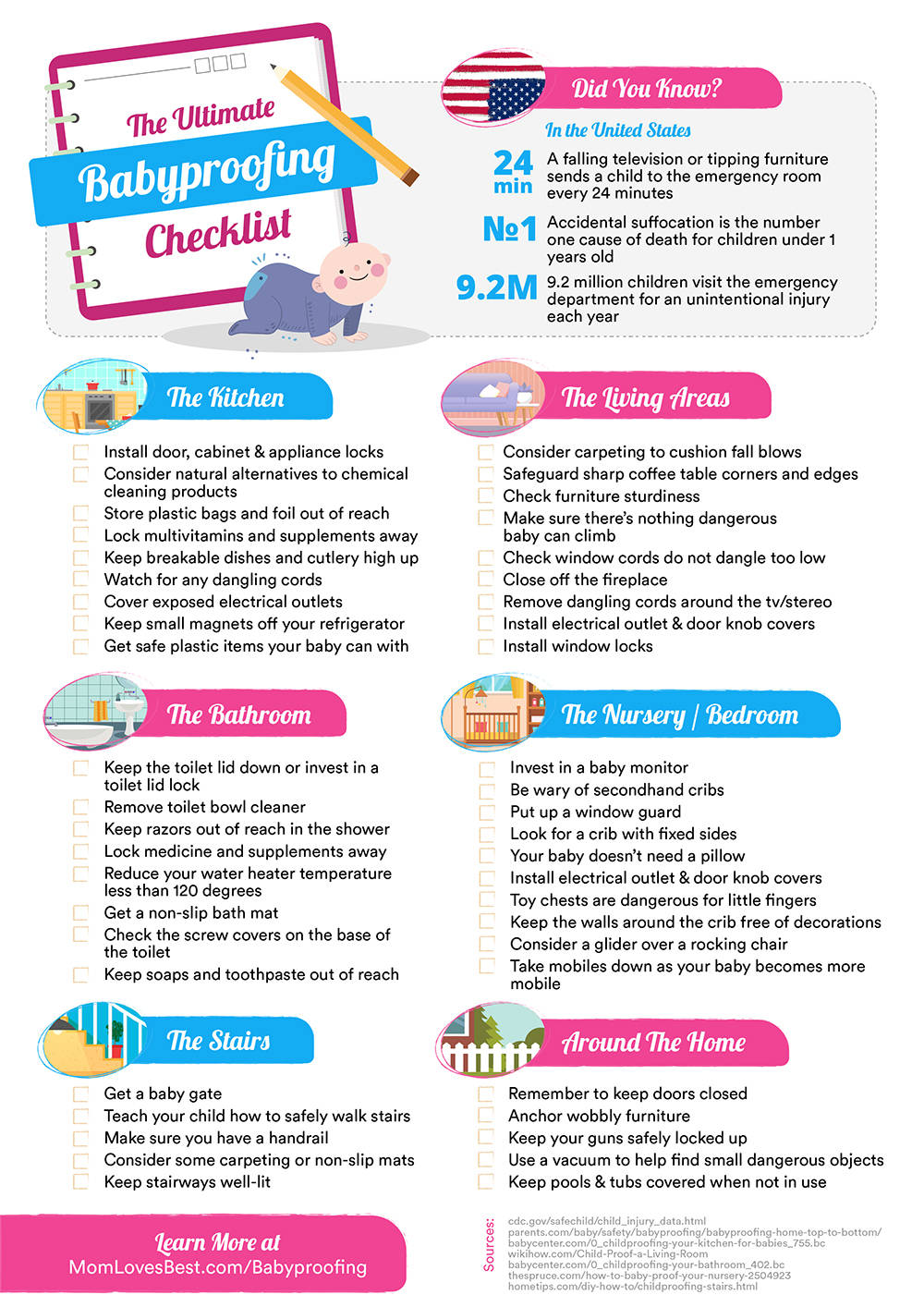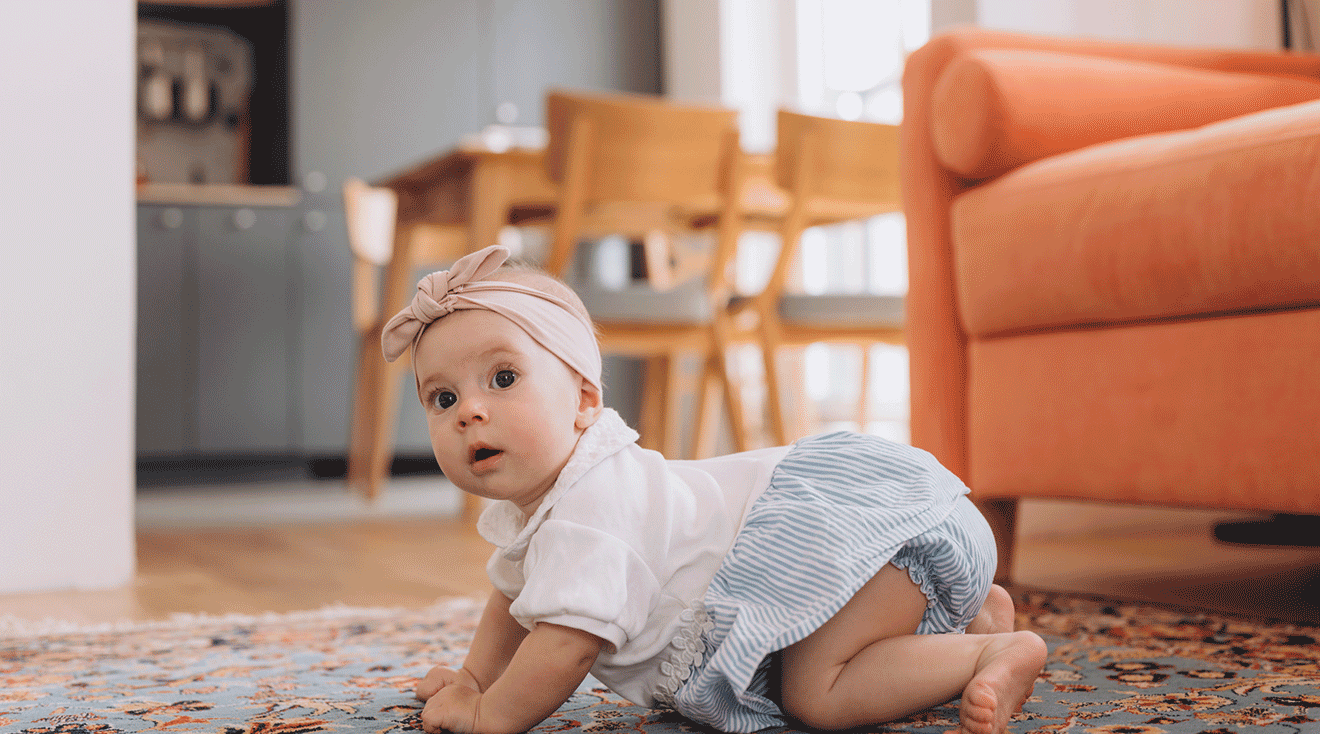Baby-proofing your home is crucial for the safety of your child. Use this checklist to ensure you’ve taken all necessary precautions.
As a parent, ensuring the safety of your baby at home is a top priority. By implementing safety measures, you can create a secure environment for your little one to explore and play. Taking proactive steps to baby-proof your home can help prevent accidents and injuries.
This comprehensive checklist covers all aspects of baby-proofing, from securing furniture and electrical outlets to creating a safe sleeping environment. Following these guidelines will give you peace of mind and allow your baby to thrive in a secure and protected home environment.

Credit: www.creativecornerchildcarecenter.com
Choosing The Right Safety Equipment
When it comes to baby-proofing your home, choosing the right safety equipment is crucial. Taking the necessary precautions to safeguard your little one from potential hazards is a top priority for parents. From securing cabinets and drawers to covering electrical outlets and ensuring stair and railing safety, there are various measures you can take to create a secure environment for your child.
Cabinets And Drawers
- Invest in child-proof locks for cabinets and drawers to prevent your child from accessing potentially dangerous items such as cleaning products, sharp objects, or potential choking hazards.
Electrical Outlets
- Install safety outlet covers to shield electrical outlets from curious little fingers. Electrical outlets pose a significant threat and should be effectively covered to avoid any accidents.
Stairs And Railing
- Implement stair gates to secure the stairways and prevent your child from climbing up or down without supervision. Also, ensure that the railing is secure and has no gaps that may entrap a small child.

Credit: www.pinterest.com
Eliminating Hazards In The Nursery
Creating a safe nursery environment is a top priority for parents. By taking preventative measures and eliminating potential hazards, you can ensure your baby’s safety. Let’s explore some key safety measures to consider when baby-proofing the nursery.
Crib Safety
- Choose a sturdy crib with slats that are no more than 2-3/8 inches apart to prevent the risk of entrapment.
- Ensure the crib mattress fits snugly with no gaps around the edges to prevent the baby from getting trapped.
- Remove all soft bedding, including pillows, blankets, and stuffed animals, to reduce the risk of suffocation or Sudden Infant Death Syndrome (SIDS).
Window Cord Safety
- Use cordless window coverings to prevent strangulation hazards for curious little ones.
- If corded blinds are installed, make sure the cords are well out of reach and secured with cord cleats or tension devices.
- Consider installing cord covers or wind-up devices to keep window cords safely out of reach.
Securing Furniture
- Anchor heavy furniture such as dressers, bookshelves, and changing tables to the wall to prevent tipping.
- Keep electrical cords and baby monitor cords secured and out of reach to avoid strangulation or tripping hazards.
- Ensure all furniture corners and edges are padded to minimize the risk of injury from accidental bumps or falls.
Protecting Your Baby In The Living Room
The living room is a central hub in many households, where families gather to relax and spend time together. However, it can also pose numerous hazards for curious little explorers. As a parent, ensuring the safety of your baby is paramount. By taking the necessary precautions, you can create a safe and secure environment. In this article, we will discuss two crucial aspects of baby-proofing your living room: fireplace safety and TV and furniture anchoring.
Fireplace Safety
Your fireplace can be a cozy feature in your living room, but it can also be a potential danger for your baby. To address this concern, follow these safety measures:
- Install a fireplace gate or screen to prevent direct access to the flames and hot surfaces.
- Ensure the gate or screen is sturdy and securely attached.
- Avoid using glass doors as they can become hot and pose a burn risk.
- Store fireplace tools and accessories out of your baby’s reach.
- Place a non-slip hearth mat or rug in front of the fireplace to cushion any falls.
Tv And Furniture Anchoring
As TVs and furniture can tip over and cause serious injuries, taking steps to secure them is crucial. Here’s how:
- Secure your TV by anchoring it to a wall or using an anti-tip kit.
- Ensure cords are out of reach and properly managed to avoid tripping hazards.
- Anchor bookshelves, cabinets, and other heavy furniture to the wall to prevent tipping.
- Consider using corner guards to protect your baby from sharp edges.
- Keep small items, such as decorative objects, out of your baby’s reach to avoid choking hazards.
By taking these safety precautions, you can create a living room that is both comfortable and secure for your baby. Remember, regular inspections and ongoing vigilance are essential to ensure your baby’s safety in this space.
Creating A Safe Kitchen Environment
When it comes to baby-proofing your home, the kitchen is one of the most important areas to focus on. With potential dangers like stoves, ovens, and cabinets, it’s crucial to take the necessary safety precautions to keep your little one out of harm’s way. Let’s explore how you can create a safe kitchen environment for your baby.
Stove And Oven Safety
Keeping your child away from the stove and oven is a top priority. Here are a few safety measures you can implement:
- Install stove knob covers to prevent your baby from accidentally turning on burners.
- Use stove guards to create a barrier between your child and hot pots and pans.
- Place a baby gate in the kitchen doorway to restrict access when you’re cooking.
- Always turn pot handles inward to prevent accidental spills and burns.
Locking Fridge And Cabinets
Curious little hands can easily get into trouble in the kitchen. Ensure your baby’s safety by following these tips:
- Install childproof locks on your fridge to prevent access to harmful substances.
- Secure your lower cabinets with cabinet locks to keep cleaning products and sharp utensils out of reach.
- Consider using adhesive latches to secure upper cabinets, especially if they contain breakable items.
- Store toxic items and small objects, like refrigerator magnets, out of reach on higher shelves.
Establishing Safety Measures In The Bathroom
When it comes to baby-proofing your home, one area that requires special attention is the bathroom. The bathroom can pose various hazards, from slippery surfaces to potential drowning risks. To ensure your little one’s safety, it’s crucial to establish safety measures that address these concerns. In this blog post, we will discuss some important safety precautions parents should take to create a secure and baby-friendly bathroom environment.
Bath Time Safety
Bath time is a time of relaxation and bonding with your baby, but it’s important to never leave your little one unattended in the tub, even for a second. To prevent accidents and ensure a safe bathing experience, consider the following:
- Always keep one hand on your baby at all times during bath time.
- Ensure the water temperature is comfortable and safe by using a bath thermometer or checking it with your elbow.
- Use a baby bathtub or a non-slip mat to prevent your baby from sliding in the tub.
- Keep all bath products, such as shampoo and soap, within arm’s reach to minimize the need to step away from the baby.
- After bath time, remember to drain the tub immediately to prevent accidental falls or drowning.
Toilet Safety
The toilet can be a dangerous place for curious little ones, so it’s essential to implement safety measures to prevent accidents and injuries:
- Keep the toilet lid closed and consider using a toilet lock to prevent your baby from opening it.
- Be cautious of small objects that could be within reach of your baby and could be accidentally swallowed.
- If you have a toilet paper holder, make sure it is securely attached to the wall to prevent it from becoming a potential hazard.
- Consider installing a toilet seat lock or a toilet guard to prevent your baby from falling in.
- Teach your child the importance of not playing with the toilet and explain the risks associated with it.
By implementing these safety precautions in the bathroom, you can create a secure environment for your baby and minimize the risks of accidents. Remember, it’s always better to be proactive and make your bathroom a baby-friendly space rather than dealing with unfortunate accidents. Stay tuned for more tips on baby-proofing your home.

Credit: www.pampers.com
Frequently Asked Questions For Baby-proofing Your Home: Safety Precautions For Parents Checklist
What Precautions Have You Taken To Child Proof Your Home?
To childproof our home, we have taken these precautions: secured furniture to walls, installed safety gates on stairs, put locks on cabinets and drawers, covered electrical outlets, and placed safety covers on sharp corners.
How Can Parents Make The Home Safer For Infants?
To make the home safer for infants, parents should use safety gates, secure furniture and appliances, keep small objects out of reach, use outlet covers, and monitor water temperature. These measures help prevent accidents and protect infants from harm. Regularly childproofing the home is crucial for their safety.
What Do You Do To Baby Proof Your Home What Dangers Might You Need To Address If You Lived In A Different Environment?
To baby-proof your home, cover electrical outlets, secure furniture, use safety gates, install cabinet locks. In different environments, watch out for different hazards such as wildlife, extreme weather, or different cultural safety norms. Regularly re-evaluate safety measures for changing environments.
How Can I Make My House Baby Proof?
To baby-proof your house, follow these steps: 1. Put safety gates on stairs and in rooms with hazards. 2. Cover electrical outlets with plug covers. 3. Install corner guards on furniture to protect against bumps. 4. Secure heavy furniture to the wall to prevent tipping.
5. Keep small objects and choking hazards out of reach.
Conclusion
Ensuring that your home is baby-proofed is essential to protect your little one from potential hazards. By following this safety checklist, you can create a secure environment for your child to explore and grow. Remember, regular inspections and monitoring are key to maintaining a safe home.
Keep these tips in mind and enjoy peace of mind as your baby navigates the world around them!









